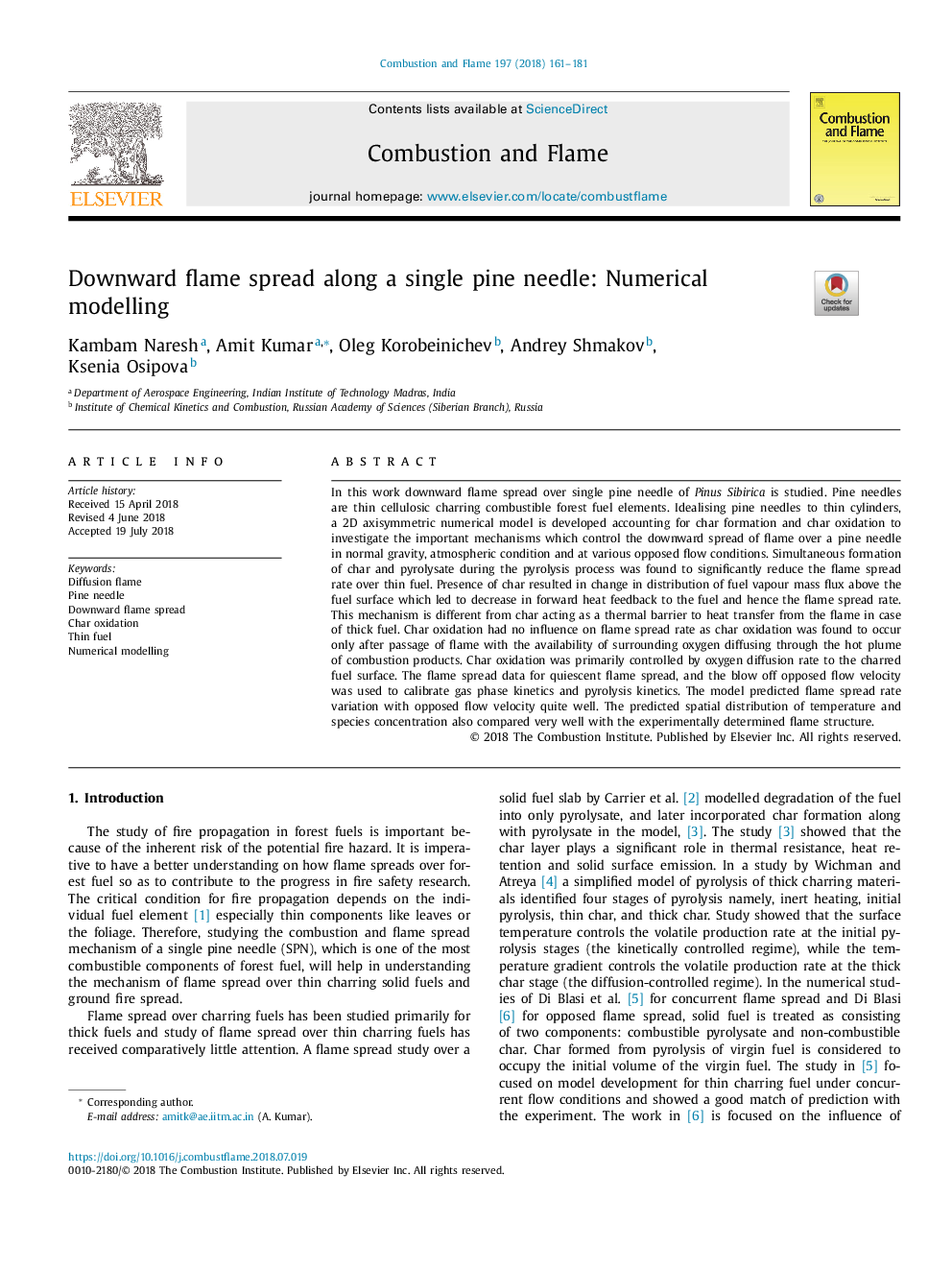| Article ID | Journal | Published Year | Pages | File Type |
|---|---|---|---|---|
| 11000293 | Combustion and Flame | 2018 | 21 Pages |
Abstract
In this work downward flame spread over single pine needle of Pinus Sibirica is studied. Pine needles are thin cellulosic charring combustible forest fuel elements. Idealising pine needles to thin cylinders, a 2D axisymmetric numerical model is developed accounting for char formation and char oxidation to investigate the important mechanisms which control the downward spread of flame over a pine needle in normal gravity, atmospheric condition and at various opposed flow conditions. Simultaneous formation of char and pyrolysate during the pyrolysis process was found to significantly reduce the flame spread rate over thin fuel. Presence of char resulted in change in distribution of fuel vapour mass flux above the fuel surface which led to decrease in forward heat feedback to the fuel and hence the flame spread rate. This mechanism is different from char acting as a thermal barrier to heat transfer from the flame in case of thick fuel. Char oxidation had no influence on flame spread rate as char oxidation was found to occur only after passage of flame with the availability of surrounding oxygen diffusing through the hot plume of combustion products. Char oxidation was primarily controlled by oxygen diffusion rate to the charred fuel surface. The flame spread data for quiescent flame spread, and the blow off opposed flow velocity was used to calibrate gas phase kinetics and pyrolysis kinetics. The model predicted flame spread rate variation with opposed flow velocity quite well. The predicted spatial distribution of temperature and species concentration also compared very well with the experimentally determined flame structure.
Related Topics
Physical Sciences and Engineering
Chemical Engineering
Chemical Engineering (General)
Authors
Kambam Naresh, Amit Kumar, Oleg Korobeinichev, Andrey Shmakov, Ksenia Osipova,
